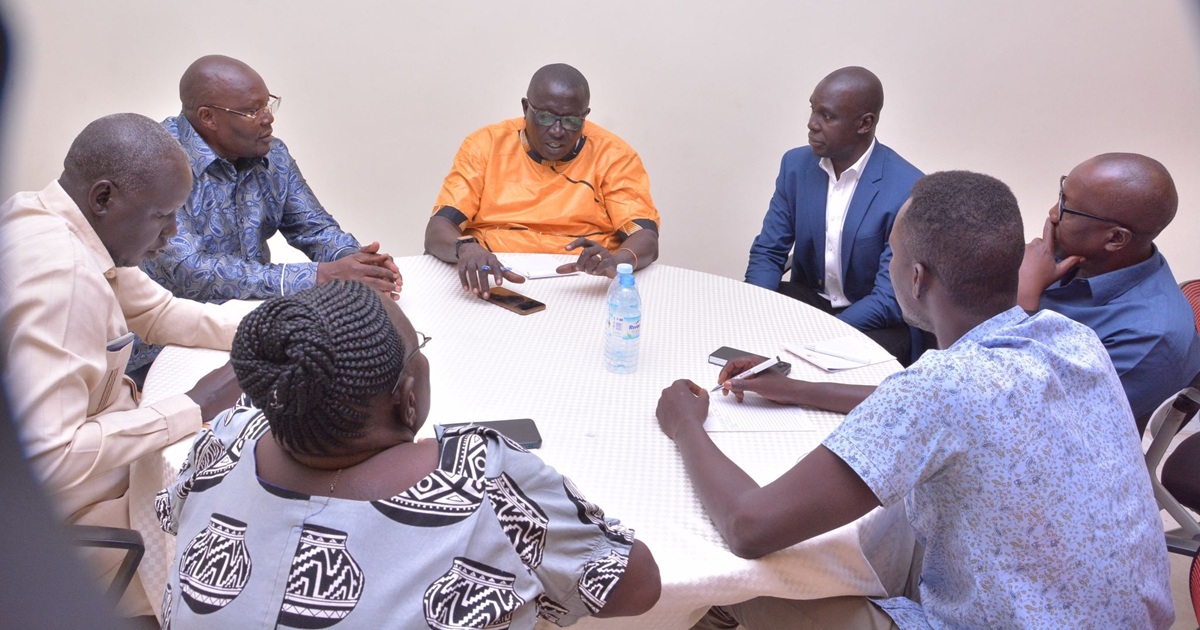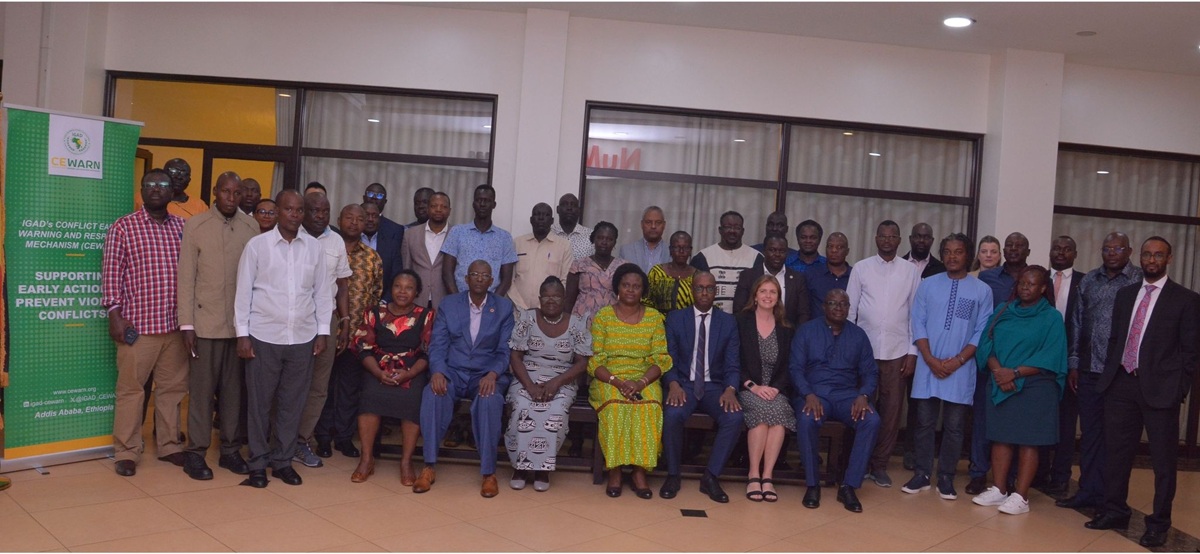
Participants sharing lived experiences of the Climate-induced conflict during the workshop in Entebbe, Uganda.
From 13 to 15 May 2025, CEWARN convened representatives from pilot areas vulnerable to climate induced conflict namely, Aweil (South Sudan), Mandera (Kenya), and Karamoja (Uganda) to test novel tools designed to strengthen early warning systems for climate-induced conflict. The workshop also brought together heads of national conflict early warning and early response units from the three countries, alongside representatives from the UN, African Union, EAC, COMESA, and the Irish government, a key partner in CEWARN’s climate-conflict initiatives.
Climate-Induced Conflict: Voices from the Ground
During the meeting, community representatives shared lived experiences of climate-induced insecurity, local coping strategies, and hopes for early warning tools that can strengthen prevention efforts. From droughts and flashfloods to land degradation and resource competition, these voices highlighted how climateshocks are driving mobility, intergroup tensions, and social instability while also inspiring local innovation and resilience.
Two Novel Tools for Conflict Early Warning
Participants reviewed two novel tools under development, each with distinct yet complementary roles. The first, developed by Nairobi-based DataCraft, is the Climate Conflict Events Scanning & Monitoring System. This tool aggregates diverse data sources including media reports to capture vast amounts of event data, enabling CEWARN to detect emerging trends and monitor key variables in real time.
The second Novel tool, developed by Boston based Virtual Research Associates (VRA), is the Climate-Conflict Early Warning & Predictive tool. It uses rainfall, vegetation, and conflict trend data to offer predictive insights on climate-induced conflict risks. This tool is refined and advanced continuously based on the extensive trend analysis made possible by the first tool.

Group photo of the participants that attended the Novel tool testing workshop
User-Centered Design for Greater Impact
A key discussion point emphasized that while vegetation health is a useful indicator, it is not sufficient alone. Factors such as delayed rains, drought recovery, and pasture pressure combined with local context, past shocks, and existing tensions shape how climatestress translates into instability.
The workshop also underscored the importance of user experience: for these tools to serve vulnerable communities effectively, they must be simple, adaptable to local needs, and accessible to a diverse range of stakeholders.
The insights gathered will guide ongoing refinement of the tools to ensure they reflect the realities of communities facing climate-induced conflict risks, providing actionable data to support policy level responses. Ultimately, the goal is to provide timely, actionable data that strengthens regional peacebuilding and prevention efforts through an inclusive and forward-looking early warning system.


